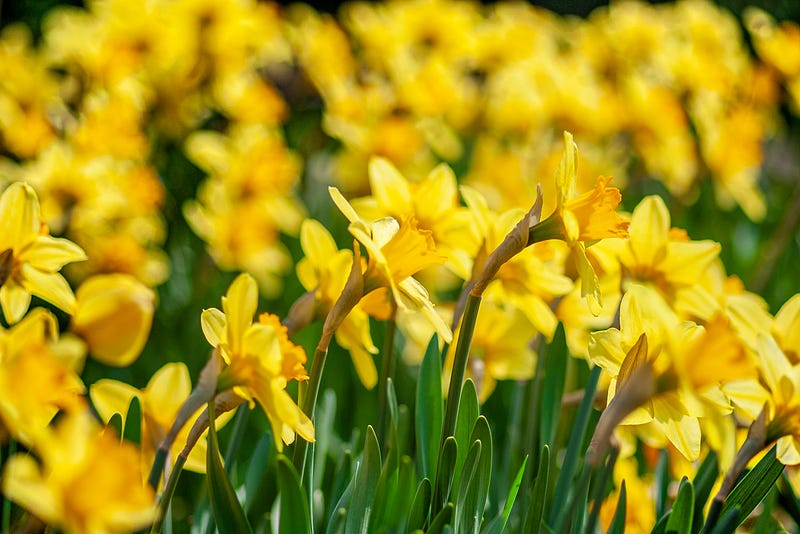Nature's Daily Walk: Finding Joy in Simple Pleasures
Written on
Chapter 1: Embracing the Beauty of Nature
As someone who cherishes the great outdoors, I've often longed for a home surrounded by more vibrant wildlife—perhaps ospreys soaring overhead or the occasional wolf roaming nearby. Unfortunately, living in England, one of the most nature-depleted regions globally, made that dream seem unlikely. Thus, my daily walks often left me feeling a bit disheartened.
Over time, however, I've learned to shift my perspective and appreciate the beauty that exists rather than lamenting what is missing. This practice of gratitude has not only enriched my walks but also my approach to life as a whole. I’ve found joy in the little things and have become more attuned to nature’s rhythms.
Each day in the outdoors follows a familiar pattern, much like our own lives. For instance, I find amusement in watching rooks as they embark on their daily journey—from their roosting woods in the morning to the fields where they forage, and back again at dusk, filling the sky with their raucous calls. There’s a humorous saying that distinguishes crows from rooks: if you see one, it’s a crow, but if you see many, they must be rooks. On that note, I generally take the flocks I see to be rooks, though who’s to say for certain?!
Most days, I stroll from my home to a nearby park, taking time to observe the seasonal changes in plants and insects along the way. At this time of year, while much of nature appears to be in a dormant state, squirrels are already active, and I’ve noticed that birds are singing earlier than usual. Occasionally, I spot a bee, confused by the unseasonably warm weather, searching for food among the early daffodils and snowdrop patches.
Though not as thrilling as witnessing ospreys or wolves, there’s always something new to discover. I often see rabbits grazing in fields, ever watchful for buzzards above, or hear the sweet melody of a robin flitting along a hedge, accompanied by the scolding of a wren.

Chapter 2: The Charm of Local Fauna
The lively antics of magpies hopping from branch to branch bring to mind an old English folk saying, which has entertained many for centuries. The rhyme, first noted in 1780, goes as follows:
One for sorrow,
Two for joy,
Three for a girl,
Four for a boy,
Five for silver,
Six for gold,
Seven for a secret,
Never to be told.
A longer version specific to Lancashire counts up to thirteen magpies with additional lines:
Eight for a wish,
Nine for a kiss,
Ten a surprise you should be careful not to miss,
Eleven for health,
Twelve for wealth,
Thirteen beware it’s the devil himself.
So, if you're in Lancashire, keep your eyes peeled! Thankfully, I rarely encounter more than five magpies at once, though they do seem to favor family groups longer than other species.
Magpies are known for their scavenging habits, often feasting on carrion and raiding other birds’ nests for eggs or chicks. They also have a penchant for collecting shiny objects, a trait that may be exaggerated but has led to some fascinating stories. For example, in 2007, one magpie made headlines for pilfering small tools, loose change, and even car keys from a garage. Another notable incident occurred in 2008 when a platinum engagement ring was retrieved from a magpie’s nest three years after it had disappeared. Most recently, in 2019, a French lumberjack stumbled upon over 1,000 coins in a magpie’s nest at the Château de Versailles—an impressive collection from the palace gardens!
The first video titled "Just getting my daily stroll on in Walmart" gives viewers a light-hearted look at enjoying the outdoors, no matter where you are.
The second video, "GCTV: Daily Stroll | 'EVERY DAY I WAKE UP IS HISTORY!'" showcases the joys of everyday walks and the importance of appreciating our surroundings.
In recent months, I've spotted a red kite, one of the few birds that dares to challenge a magpie. Red kites were once abundant in Britain but were nearly wiped out due to hunting. Now, after being reintroduced, they are slowly reclaiming their territory. With their distinctive forked tails, these majestic scavengers were once seen in large numbers even in cities.
Every walk reveals something new—perhaps a woodpecker drumming on a sturdy oak or a moorhen paddling across a pond. As the twigs begin to swell, the hedgerows will soon burst into life with the arrival of warmer weather, and nature's vibrant dance will commence once more. The crisp, squeaky song of a great tit and the rhythmic verses of a song thrush signal that the cycle of life is already in progress, with winter finally loosening its grip.
While my daily stroll may not rival the excitement of a wildlife documentary featuring large predators and vast herds, it offers a unique joy in observing the little wonders of nature right outside my door—an ongoing practice of gratitude for the beauty we often overlook.